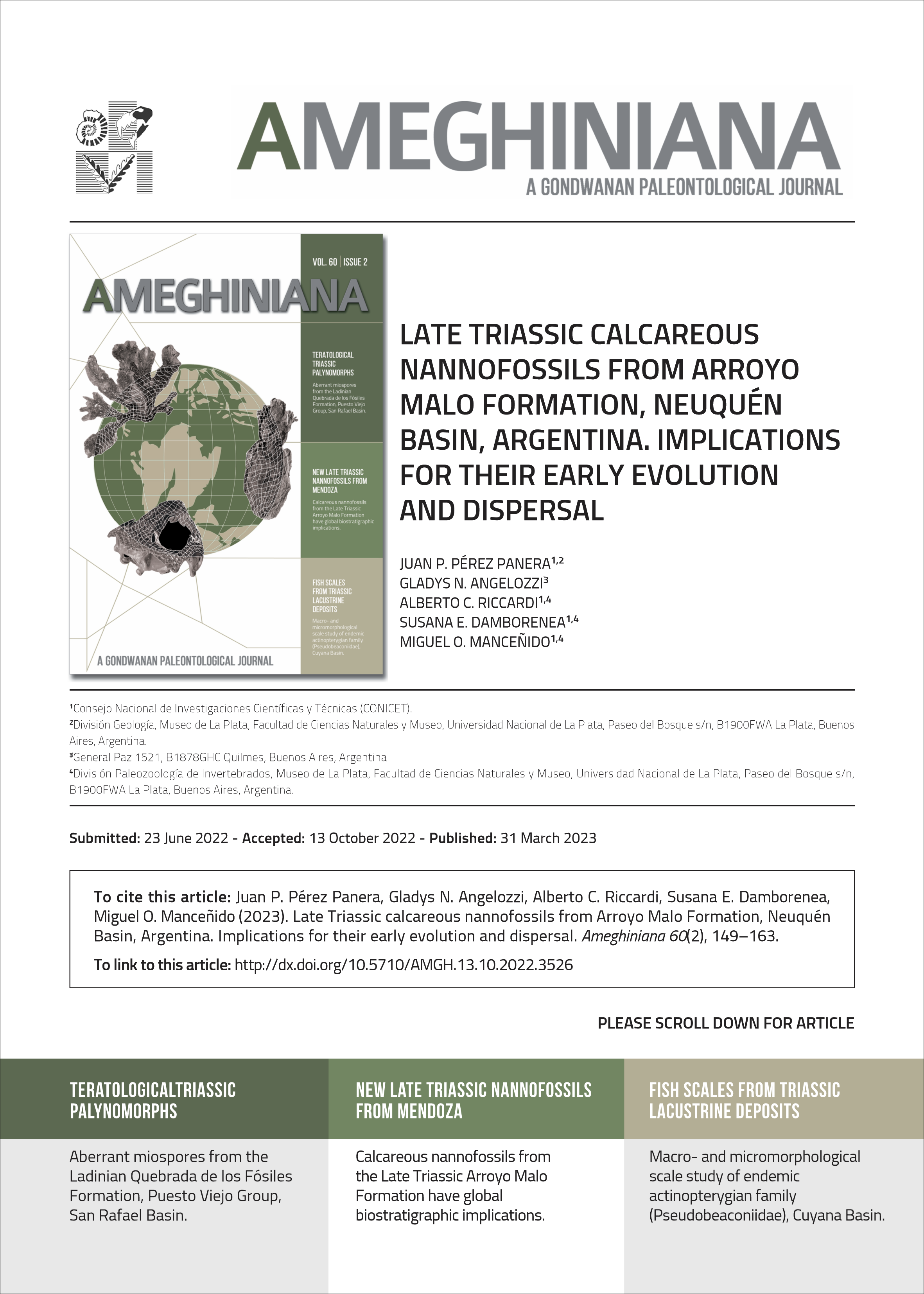LATE TRIASSIC CALCAREOUS NANNOFOSSILS FROM ARROYO MALO FORMATION, NEUQUÉN BASIN, ARGENTINA. IMPLICATIONS FOR THEIR EARLY EVOLUTION AND DISPERSAL
DOI:
https://doi.org/10.5710/AMGH.13.10.2022.3526Keywords:
Norian, Rhaetian, Biostratigraphy, Paleobiogeography, South AmericaAbstract
The Arroyo Malo Formation represents the first marine ingression during the Late Triassic in the Neuquén Basin, west-central Argentina. The presence of calcareous nannofossils in this unit provides an independent age constraint of a late Norian to Rhaetian age for its lower and middle parts, in agreement with known fossil invertebrates. Furthermore, this represents one of the only three records of this group known so far outside the Tethyan Realm. The presence of monospecific assemblages of Prinsiosphaera triassica in the late Norian and assemblages characterized by P. triassica and Eoconusphaera zlambachensis in the Rhaetian, together with a review of other known records worldwide, allows the formal proposal of a global biozonation for the Late Triassic. Prinsiosphaera triassica Biozone, from middle Norian to late Norian, and Crucirhabdus primulus Biozone, spanning the Rhaetian (comprising two sub-biozones in the Tethys), are defined. Based on the new record from the Upper Triassic of the Neuquén Basin, we interpret that calcareous nannofossils originated during the middle Norian in the Western Tethys, and we suggest that they then rapidly dispersed to the Southeastern Tethys and from there to the Eastern Pacific across Panthalassa by southern mid-latitude easterly oceanic currents.

Additional Files
Published
Issue
Section
License
Authors publishing in Ameghiniana have the option of making their article freely available online. Authors opting for the Open Access must pay a fee of $300 (US dollars) to cover article-processing costs and to ensure the article is made open access. Please contact the Production Team after the acceptance of your manuscript if you are interested in making your article Open Access. This option implies by default a license Creative Commons Attribution Non-Commercial-NoDerivs License (CC BY NC ND). If your funding institution requires a different licensing option please communicate this to the Production Team after the acceptance of your manusctipt.










